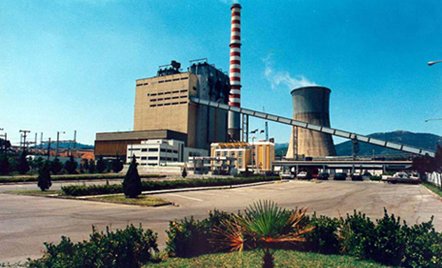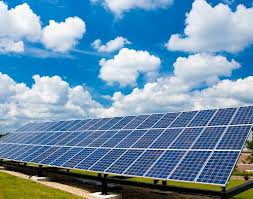 |
|
|
 |
 |
| Department of Energy Technology Engineering |
 |
 |
 |
|
 |
| Heat Transfer |
| Course Code: |
3403B |
| Course Type: |
Lectures & Laboratory |
| Course Category: |
Core Module |
| Hours per Week: |
5 (Lectures 3, Lab 2) |
| Credit Units: |
5,5 |
| Semester: |
C |
Aims and Scope
The
purpose of the study of Heat Transfer is to provide the initial background for
the study of energy transport phenomena, which are becoming scientific and
technological subjects of a growing concern and importance, not only for
mechanical and electrical engineers but also in a broad range of different
scientific disciplines. Among these vital disciplines are geophysics,
meteorology and earth sciences as well as studies dealing with heat and
pollutant dispersion in the biosphere. The study of Heat Transfer with an
impressively expanding number of applications in the contemporary technology
begins with the teaching of the basic physical principle that energy in the
form of heat is transferred as a consequence of a temperature difference or
under the effect of a temperature gradient, according to the pioneering work
developed by Fourier. The aim of the program is to introduce and familiarise
the undergraduate students with the three fundamental thermal energy transport
processes conduction, convection, and
radiation, where the former represents a heat transfer process carried out in
solid materials through diffusion phenomena under the influence of a
temperature gradient. When conduction occurs within a fluid in motion the
process becomes convective heat transfer, in absolute contrast with the
radiative heat transfer which involves energy transfer phenomena caused by
electromagnetic waves. The introduction of quantitative laws and mathematical
models allows the students to proceed to simple and more advanced engineering
calculations involving combined heat transfer phenomena occurring in practice,
in various fields of energy technology like heat transfer from the building
envelope, extensive use of heat exchangers for energy conservation
applications, maximum current loading of power cables and lines etc.
Course Description
Theory: Introduction to the
fundamental heat transfer processes, Structure of matter and thermal
conductivity, Multi dimensional and one dimensional heat transfer by conduction
under steady state conditions, thermal resistance and U value of simple and composite
plane wall structures, simple and composite cylindrical wall structures, simple and composite spherical walls with
convective boundary conditions, Optimum insulation thickness in cylindrical
walls, thermal contact resistance and its influence on energy conservation.
Transient heat transfer by conduction, the general three dimensional transient
heat conduction equation with heat generation, Differential equations of
Poisson, Laplace etc, Transient heat transfer applications and solutions using
the Heisler Diagrams, Cooling fins, their importance and significance, Cooling
fin design and calculations. Heat exchangers, their scope and taxonomy,
Concentric tube, Shell and tube, Compact, Plate etc heat exchangers, Energy
balance and calculation of heat exchangers using the Logarithmic mean
temperature difference and the NTU methods. Natural and forced Convection,
Physical interpretation of mechanisms and phenomena involved. The significance
of dimensionless numbers and the development and significance of the thermal
and hydrodynamic boundary layers. The calculation of the convective heat
transfer coefficient for various forced and free convection characteristic
cases and configurations. Thermal radiation, the concept of Black body, Laws of
thermal radiation, Plank’s law, Stefan-Boltzmann’s and Wien’s laws. Radiative
properties of real surfaces, Selective and Grey surfaces, spectral and total
emissivity, absorptivity and reflectivity of real surfaces, Kirchhoff’s law.
Radiative heat transfer between two surfaces, the definition and calculation of
the View Factor, Net radiation heat exchange between any two surfaces,
Equivalent sky temperature.
Laboratory: Following an extensive
recent modification, the programme is
currently based on 16 laboratory
exercises among which 12 different are selected for presentation during every
teaching term. The laboratory exercises are properly designed for the two hours
duration of the class and they are dealing with different objectives aiming to
familiarise students on issues first dealing with the temperature measurement
using both thermocouple and NTC thermistor temperature sensors. They also deal
with the study of one dimensional transient conduction phenomena and the
approach to steady-state condition, along with measurements of thermal
conductivity of standard geometry metallic samples. Also the study of the
conduction heat transfer through cylindrical walls, the measurement of the
(free and forced) convective heat transfer coefficient based on the lumped
capacitance method valid for Bi<<0.1. The study of steady-state heat
balance of cylindrical and spherical heaters under the influence of combined
conduction forced and free convective and radiative heat transfer. The
programme also deals with the investigation of the heat balance and the study
of the influence of various Heat Exchanger parameters on their operational
behaviour and performance as well as involves various exercises aiming to study
the Thermal Radiation laws and their effect on the radiative heat exchange between
real surfaces.
All participating students are
obliged to proceed into the class of the followimg week having previously studied thoroughly the aim,
the background theory and the procedure that will be followed by the exercise.
During each class and following a brief outline of the procedure, practical
measurements are carried out using the specific equipment of the laboratory
exercise. The derived measurements are employed for the appropriate
calculations aiming to derive results, plots and comments which are formally
submitted at the end of the session or at maximum before the attendance of the
subsequent exercise in the following week, as the required handouts for the
evaluation of each participating student. At the end of the semester all the registered
students should participate in a written evaluation test for the overall
laboratory course. The final results are derived based on the combined effect
of the overall performance during sessions and the score in the final
evaluation test.
Expected Course Outcome
Bibliography
Greek:
- Σημειώσεις από τις παραδόσεις του μαθήματος ΜΕΤΑΔΟΣΗ ΤΗΣ ΘΕΡΜΟΤΗΤΟΣ, Π.Θ.Τσιλιγγίρης, ΤΕΙ Αθήνας, 2007.
- Σημειώσεις εργαστηρίου ΜΕΤΑΔΟΣΗΣ ΘΕΡΜΟΤΗΤΟΣ, Π.Θ.Τσιλιγγίρης, ΤΕΙ Αθήνας, 2005
- ΜΕΤΑΦΟΡΑ ΘΕΡΜΟΤΗΤΑΣ, D.Pitts, L.Sissom, (Ελληνική μετάφραση σειρά Schaum, Έκδοση Τζιόλα,Θεσσαλονίκη, 2001.
English:
- Fundamentals of Heat &
Mass Transfer, F.P.Incropera,D.P.Witt, John Wiley & Sons, 1985
- Heat Transfer, A
Practical Approach, Y.A.Cengel, McGraw-Hill Inc. 1998.
- Heat Transfer, A. Bejan,
John Wiley & Sons Inc. 1993.
- Heat Transfer,
D.R.Pitts, L.E.Sissom, McGraw Hill Shaum’s Outline Series, 1977.
- Principles of Heat
Transfer, F.Kreith, Harper International Editions, 1973.
- Analysis of Heat & Mass
Transfer, E.R.G.Eckert, R.M.Drake, McGraw-Hill Kogakusha, 1972.
|
| Created Date : 23/05/2013 |
|
|
|
| |
|
|
|
|
|
|
 |